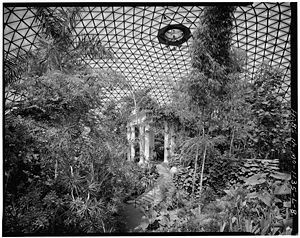
Richard Buckminster Fuller was an American architect, systems theorist, writer, designer, inventor, philosopher, and futurist. He styled his name as R. Buckminster Fuller in his writings, publishing more than 30 books and coining or popularizing such terms as "Spaceship Earth", "Dymaxion", "ephemeralization", "synergetics", and "tensegrity".
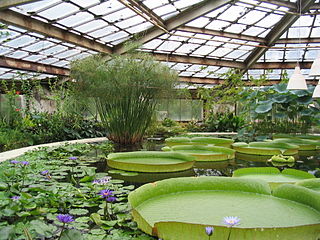
A greenhouse is a special structure that is designed to regulate the temperature and humidity of the environment inside. There are different types of greenhouses, but they all have large areas covered with transparent materials that capture sunlight and heat. The most common materials used in modern greenhouses for walls and roofs are rigid plastic made of polycarbonate, plastic film made of polyethylene, or glass panes. When the inside of a greenhouse is exposed to sunlight, the temperature increases, providing a sheltered environment for plants to grow even in cold weather.

A geodesic dome is a hemispherical thin-shell structure (lattice-shell) based on a geodesic polyhedron. The triangular elements of the dome are structurally rigid and distribute the structural stress throughout the structure, making geodesic domes able to withstand very heavy loads for their size.

The Missouri Botanical Garden is a botanical garden located at 4344 Shaw Boulevard in St. Louis, Missouri. It is also known informally as Shaw's Garden for founder and philanthropist Henry Shaw. Its herbarium, with more than 6.6 million specimens, is the second largest in North America, behind that of the New York Botanical Garden. The Index Herbariorum code assigned to the herbarium is MO and it is used when citing housed specimens.
The year 1960 in architecture involved some significant architectural events and new buildings.

A conservatory is a building or room having glass or other transparent roofing and walls, used as a greenhouse or a sunroom. Usually it refers to a space attached to a conventional building such as a house, especially in the United Kingdom. Elsewhere, especially in America, it can often refer to a large freestanding glass-walled building in a botanic garden or park, sometimes also called a palm house if tall enough for trees. Municipal conservatories became popular in the early 19th century.
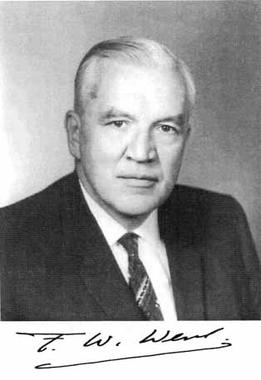
Frits Warmolt Went was a Dutch biologist whose 1928 experiment demonstrated the existence of auxin in plants.

The Bloedel Floral Conservatory is a conservatory and aviary located at the top of Queen Elizabeth Park in Vancouver, British Columbia.

Phipps Conservatory and Botanical Gardens is a botanical garden set in Schenley Park, Pittsburgh, Pennsylvania, United States. It is a City of Pittsburgh historic landmark and is listed on the National Register of Historic Places.
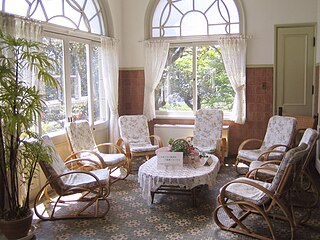
A sunroom, also frequently called a solarium, is a room that permits abundant daylight and views of the landscape while sheltering from adverse weather. Sunroom and solarium have the same denotation: solarium is Latin for "place of sun[light]". Solaria of various forms have been erected throughout European history. Currently, the sunroom or solarium is popular in Europe, Canada, the United States, Australia, and New Zealand. Sunrooms may feature passive solar building design to heat and illuminate them.
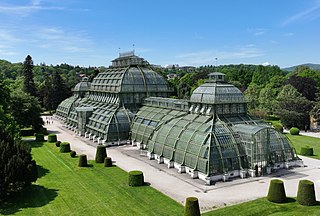
Palm house is a term sometimes used for large and high heated display greenhouses that specialise in growing palms and other tropical and subtropical plants. In Victorian Britain, several ornate glass and iron palm houses were built in botanical gardens and parks, using cast iron architecture. Especially in English-speaking countries outside the British Isles, these are often called conservatories, in the UK mainly a term for small glass structures attached to houses.
Lord & Burnham was a noted American boiler and greenhouse manufacturer, and builders of major public conservatories in the United States.

The San Antonio Botanical Garden is a 38-acre (150,000 m2), non-profit botanical garden in San Antonio, Texas, United States, and the city's official botanical garden.

Southwest Garden is a neighborhood of St. Louis, Missouri, located south of The Hill and Forest Park Southeast, west of the Missouri Botanical Garden and Tower Grove Park, east of Lindenwood Park and Clifton Heights, and north of North Hampton.

The Continental-Life Building, also known as the Continental Building, is an Art Deco skyscraper in St. Louis, Missouri, United States, which was completed in 1930. The building is located in Grand Center in St. Louis' Midtown neighborhood, and is visible from Interstate 64/Highway 40 and Interstate 44.
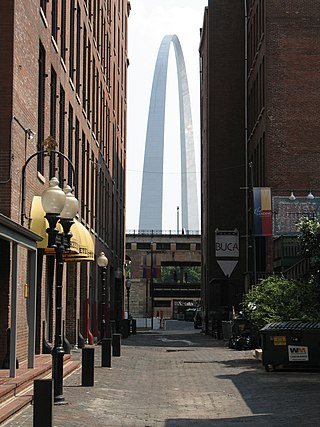
The architecture of St. Louis exhibits a variety of commercial, residential, and monumental architecture. St. Louis, Missouri is known for the Gateway Arch, the tallest monument constructed in the United States. Architectural influences reflected in the area include French Colonial, German, early American, European influenced, French Second Empire, Victorian, and modern architectural styles.

The Enid A. Haupt Conservatory is a greenhouse at the New York Botanical Garden (NYBG) in the Bronx, New York, United States. The conservatory was designed by Lord & Burnham Co. in the Italian Renaissance style. Its major design features are inspired by the Palm House at the Royal Botanic Gardens at Kew, and Joseph Paxton's Crystal Palace.

The ASM International Headquarters and Geodesic Dome, at the Materials Park campus in Russell Township, Geauga County, Ohio, United States, are the headquarters of ASM International, a professional organization for materials scientists and engineers. These modernist structures were built in 1958 and dedicated in September 1959.

The Jewel Box is a greenhouse located in Forest Park, St. Louis, Missouri at the intersection of Wells and McKinley Drives. It now serves as a public horticultural facility and is listed on the National Register of Historic Places (NRHP).

The Anna Scripps Whitcomb Conservatory is a greenhouse and a botanical garden located on Belle Isle, a 982-acre (397-hectare) island park located on the Detroit River within Detroit, Michigan. While located near the Canada–United States border, the island is entirely within the U.S. The park itself consists of 13 acres of preserved land for the conservatory and its botanical garden.

